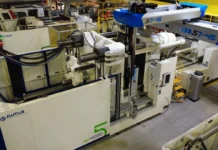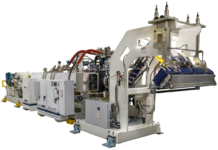By Pierre Maillet, president, Cyframe
All too often, plastic manufacturing business owners fail to realize that some products are being produced at a loss. One could argue that in such cases they might as well be shipping cash directly to customers. Here are some ways to help identify and correct where and how your company might be leaking cash.
As a for-profit company your goal – and responsibility to employees, investors and other stakeholders – is to pursue and maintain a healthy bottom line. This means ensuring that the overall balance between generated revenue and expenses leans in your favor. While payroll, taxes, rent, facility improvements, capital equipment investments and other costs are a necessity of business, there are areas where profits might be needlessly and unknowingly leaking.
For any plastics processor, it’s important to answer a few questions regarding the molded or extruded jobs you run. As you ship your product, have you accounted for:
- all real material and direct out-of-pocket production costs?
- raw material price and order volume quantity fluctuations?
- the impact of your current production rate; reject rates, set-up and line installation time for each start-up?
For some, the answer to such questions is a real eye-opener.
Keep your best customers
You likely have an overall picture of daily, weekly, and monthly cash flow. But do you really know which specific products are contributing to, or detracting from, that cash flow? To find the answer, all key costs components must be tracked daily in relation to each produced product and how true production results affect cash flow.
Some products or even customers might be contributing more than their fair share to cover lower-margin products or even worse, negative-cash flow products. Consequently, you may one day wake up to discover that your most profitable customers have moved to another supplier enticed by better pricing. To make matters even worse, low-margin customers will order even more of these cash-negative products. Such a scenario isn’t out of the realm of possibility and could quickly escalate into a very dangerous company-wide negative cash flow situation.
Uncertainty in costs associated with orders could be the result of several factors.
Internal systems are simply not equipped to track or report on the raw material: latest supplier price lists, last purchase price, average costs as well as landed average costs (i.e., important if you pay freight to purchase your raw material) and the variance between these costs as well as the standard cost used in establishing the sales price for your products.
There is an inability to signal a cost variance ALERT when a new order is entered and, as importantly, BEFORE that order is confirmed with the customer and sent to production.
You are not producing and reviewing a daily report that calculates the net cash contribution (i.e., sales price minus cash cost per unit) of each product produced (net of rejects) to determine if daily cash / margin requirements are being met.
There is a lack of at least one report that: calculates a true unit cost based on actual production results (efficiency and rejects) and the real average unit cost (or landed if freight is paid) times the volume shipped. This identifies which products and customers are responsible for your positive or negative cash flow.
Get on track
You should be very concerned if you suspect that these critical control parameters are not being followed. Here are a few helpful pointers to help rectify the situation.
Establish specific key controls: Even if done manually, a cost sheet should be created after each production run. Best of breed plastic processor have been doing this for a long time. This calculates actual production time based on machine setup and production, the reject quantity, and current raw material prices versus the original cost estimate used to determine the selling price.
When a new order comes in, the latest raw material prices can be checked against that cost sheet. And, if similar production results are anticipated, it may be time to review the selling price with the customer.
Develop a tracking strategy: All information in the cost sheet should be pulled directly from the shop floor. Too often, when owners dig deeper, they realize that – because numbers aren’t accurately recorded – machine time, rejects, and downtime information are not based on precise data but rather on estimates.
This can be partly remedied with machine PLC (programmable logic controller) monitoring and comparison against reported daily numbers. Management must ensure these numbers always match, insist that production staff pays close attention to the details and hold them accountable.
All packaged finished goods should have serialized bar-code labels that can be scanned. Rejects and downtime can be recorded on touch screen devices.
Daily cost control reports are still necessary but developing a tracking strategy will greatly reduce the risk of error and save time.
Review management reporting systems: Once shop floor data is properly tracked, it is important to bring that data into an automated reporting system. The cost sheet mentioned earlier is great, but it’s even more powerful with cumulative values allowing negative or positive trends to be spotted over time. This is true of production efficiency, reject, downtime and raw material price variances which are compared against original standard costs established to set the selling price.
Because plastic processors deal with multiple recipes or bills of material, sales price recalculation also must consider partial recipe sub-component raw material price fluctuations. As a result, regenerating price lists to maintain or improve profit margins can be taxing and time-consuming.
When evaluating the cost of a new system, remember that eliminating 10 hours of manual labor every week ultimately will yield annual savings of $10,000 – year after year.
Maintain profitability
If your company is leaking cash, you can take some solace in the fact that you’re not alone. Many plastics processor fail to account for many of the daily expenses associated with the molded or extruded products they create.
Pierre Maillet is president of CyFrame International Enterprises, Inc. A graduate of the University of Ottawa, Maillet is a CPA. Prior to CyFrame, he worked as a software applications specialist (Hewlett Packard) and IT management consultant (KPMG). Today, as head of CyFrame, Maillet helps tooling/plastic manufacturers improve production efficiency and profitability.





